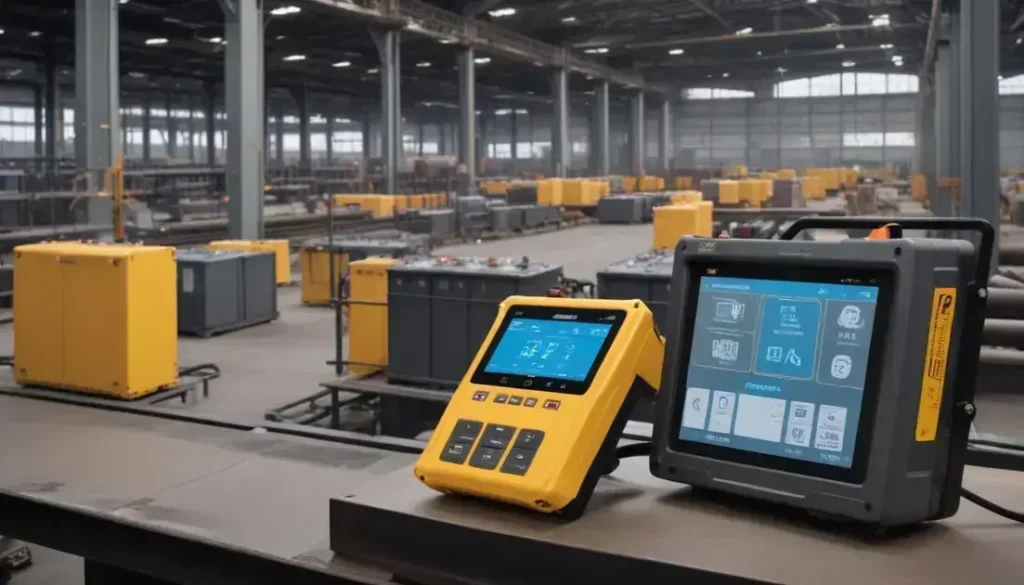Sustainable packaging reduces environmental impact through innovations like biodegradable materials, smart packaging technologies, and collaboration across supply chains, making it essential for businesses looking to enhance brand image and meet consumer demand for eco-friendly solutions.
In today’s market, sustainable packaging is not just a trend, it’s a necessity for businesses aiming to thrive while being environmentally responsible. Are your packaging solutions keeping up?
Consumer Demand for Sustainable Packaging
A growing number of consumers are prioritising sustainable packaging in their purchasing decisions. This demand reflects a broader shift towards environmental responsibility and awareness of the impact that products have on the planet. Research shows that customers are willing to pay more for products with eco-friendly packaging, highlighting the influence of sustainability on brand loyalty.
Retailers and manufacturers are responding to this trend by enhancing their packaging strategies. Many are exploring biodegradable materials, which break down naturally and reduce landfill waste. Innovations such as plant-based plastics and recycled content are becoming more common, catering to environmentally-conscious consumers.
Moreover, companies are leveraging their commitment to sustainability in marketing campaigns, further appealing to the values of today’s audience. By showcasing eco-friendly initiatives, businesses strengthen their brand image and differentiate themselves in a crowded market. As the green consumer movement continues to grow, the pressure to adopt sustainable practices will increase.
Challenges in Sustainable Materials
While the shift towards sustainable materials is essential, several challenges hinder widespread adoption. One significant issue is the availability and accessibility of eco-friendly materials. Many biodegradable options are not yet produced at scale, leading to higher costs for manufacturers.
Consumer education also plays a vital role in overcoming hurdles. Frequently, consumers are unaware of the benefits and implications of sustainable materials. Increasing awareness can encourage more informed choices regarding product purchases.
Another challenge is the compatibility of sustainable materials with existing manufacturing processes. Traditional methods may require significant adaptations or advancements to incorporate innovative materials without compromising quality. This complication can be a barrier for companies that are hesitant to invest in new technologies.
Finally, businesses face a complex regulatory landscape. Compliance with sustainability standards varies by region and industry, making it difficult to navigate. Companies need clear guidelines and support to ensure sustainable practices align with regulations without incurring excessive costs.
The Role of Regulations in Packaging
Regulations play a crucial role in shaping how sustainable packaging is developed and implemented. As governments worldwide enhance their environmental targets, stricter regulations emerge, driving businesses to adapt their packaging solutions. These regulations often focus on reducing waste, encouraging recycling, and promoting the use of renewable materials.
In the UK, the Extended Producer Responsibility (EPR) scheme is a prime example of how regulations can encourage sustainable practices. This legislation requires producers to take responsibility for the entire lifecycle of their packaging, compelling them to consider environmental impact from production to disposal.
Furthermore, regulations can help level the playing field. By implementing strict standards, all companies must comply, ensuring that environmentally friendly practices become the norm rather than the exception. This consistency fosters innovation, as businesses seek new ways to meet regulatory demands while appealing to eco-conscious consumers.
However, navigating these regulations can be complex. Companies must stay informed about local and international laws, which can differ significantly. Failure to comply can result in substantial fines and damage to brand reputation, making regulatory understanding not just a legal requirement but a strategic business necessity.
Best Practices for UK Companies
To navigate the challenges of sustainable packaging, UK companies should adopt best practices that align with environmental goals. One key practice is investing in research and development to explore innovative materials and processes. By collaborating with suppliers, businesses can discover new sustainable options that enhance their packaging.
Another important practice is implementing a closed-loop system. This approach encourages the reuse and recycling of materials, significantly reducing waste. Companies can establish take-back schemes, allowing consumers to return packaging for reuse, fostering a more sustainable lifecycle.
Transparency in sourcing is also vital. Companies should communicate their sustainability efforts clearly to consumers. Providing information about materials used and their environmental impact builds trust and reinforces commitment to sustainability.
Regular training for employees on sustainable practices is crucial. Educated staff can identify inefficiencies and suggest improvements in packaging processes. Additionally, engaging in industry collaborations enables companies to keep up-to-date with regulatory changes and emerging trends, enhancing their competitive edge.
Case Studies: Successful Sustainable Packaging
Examining case studies helps illuminate best practices in sustainable packaging. Companies across various industries have successfully implemented eco-friendly solutions that not only reduce environmental impact but also enhance brand reputation. For instance, a leading cosmetics brand transitioned to biodegradable materials for their packaging, resulting in a 30% increase in customer loyalty among environmentally conscious consumers.
Another notable example is a beverage company that adopted recyclable bottles made from 100% recycled plastic. This initiative not only cut production costs but also reduced carbon emissions significantly. As a result, the brand gained recognition in sustainability circles, attracting a new customer base eager to support green practices.
Additionally, a prominent food retailer launched a zero-waste initiative, allowing customers to refill containers in-store. This innovative approach not only minimises packaging waste but also encourages a culture of sustainability. The initiative was met with enthusiastic consumer participation, showcasing how businesses can engage customers through responsible practices.
These success stories illustrate that investing in sustainable packaging can yield significant benefits, including cost savings, enhanced consumer trust, and a more substantial competitive edge in the market.
The Economic Benefits of Going Green
Adopting green practices can bring significant economic benefits to businesses. Firstly, implementing sustainable packaging reduces material costs in the long run. Many eco-friendly materials are less expensive than traditional options once production processes are optimised.
Moreover, companies that prioritise sustainability can enhance their brand image. Consumers increasingly prefer brands that align with their values, leading to higher sales and customer loyalty. By showcasing commitment to green practices, businesses attract a clientele willing to pay a premium for environmentally responsible products.
Additionally, going green can lead to operational efficiencies. For instance, reducing waste in packaging processes not only minimises costs but also improves workflow. Companies that streamline their operations often find that they can offer competitive pricing while maintaining quality.
Investing in sustainable technologies can also result in government incentives or tax breaks. Many governments offer financial support to businesses that implement eco-friendly measures, effectively offsetting initial investment costs. This guidance encourages a shift towards sustainability without imposing undue financial strain.
Consumer Education on Packaging Choices
Effective consumer education is essential in promoting awareness about sustainable packaging choices. Many consumers remain unaware of the environmental impact of their purchasing decisions. By providing clear and accessible information, businesses can empower customers to make informed choices regarding eco-friendly products.
One strategy involves raising awareness through labelling. Products that highlight their sustainable packaging via recognisable symbols can easily attract the attention of eco-conscious shoppers. Additionally, companies can create informative content such as blogs, videos, and infographics that explain the benefits of sustainable packaging materials and practices.
Interactive campaigns that engage consumers also play a vital role in education. For instance, businesses can organise workshops or online webinars that teach customers about the lifecycle of packaging materials. These initiatives not only foster a sense of community but also enhance brand loyalty by positioning companies as leaders in sustainability.
Furthermore, partnerships with environmental organisations can amplify the reach of educational efforts. Collaborating on initiatives can build credibility and reinforce a company’s commitment to sustainability. As consumers become more educated about packaging choices, they are more likely to support brands that prioritise environmental responsibility.
Innovations in Sustainable Packaging
Innovations in sustainable packaging are reshaping how products are packaged and delivered. One exciting development is the use of edible packaging. This type of packaging, made from natural ingredients, can drastically reduce waste by allowing consumers to consume the packaging as part of the product.
Another significant trend is the advent of biodegradable materials. These materials decompose more quickly than traditional plastics, minimizing their environmental impact. Companies are increasingly incorporating plant-based plastics and compostable films that fulfil packaging needs while contributing to a circular economy.
Advances in smart packaging are also noteworthy. Features such as QR codes and digital thermometers embedded in packaging can inform consumers about product freshness and origin. This technology not only enhances consumer engagement but also enables better inventory management for retailers.
Additionally, brands are exploring minimalist design, which reduces the amount of packaging material used. By creating packaging designs that maintain structural integrity while using fewer resources, companies can decrease material costs and waste production.
Collaboration Across Supply Chains
Collaboration across supply chains is essential for achieving sustainability in packaging. By working together, businesses can create more efficient and eco-friendly processes that benefit all stakeholders involved. Partnerships between producers, suppliers, and retailers can foster innovation and enable the sharing of best practices.
One effective strategy is the establishment of joint initiatives focused on sustainability goals. For example, companies can collaborate to develop shared recycling programmes that streamline collection and processing efforts. This not only reduces waste but also ensures that more materials are recycled effectively.
Furthermore, technology plays a pivotal role in enhancing collaboration. Digital platforms allow stakeholders to communicate seamlessly, sharing data on inventory levels, production schedules, and sustainability metrics. This transparency enables better decision-making and enhances overall supply chain efficiency.
Training and capacity building are also integral to collaboration. Engaging suppliers in sustainability training can empower them to adopt eco-friendly practices, ensuring that all parts of the supply chain are aligned with corporate sustainability objectives. By building strong partnerships and fostering a culture of collaboration, businesses can significantly reduce their environmental impact while enhancing their competitive advantage.
Future Trends in Sustainable Practices
Future trends in sustainable practices are set to reshape industries and consumer behaviours. One of the most promising trends is the widespread adoption of circular economy principles. This approach promotes the reuse and recycling of materials, aiming to create closed-loop systems that minimise waste and conserve resources.
Another significant trend is the rise of smart packaging technologies. Such innovations include embedded sensors that track the freshness of products and packaging that can provide real-time data to consumers. These advancements not only enhance user experience but also contribute to better resource management.
Additionally, as public awareness about environmental issues grows, there is an increasing demand for transparent supply chains. Consumers are keen to know the origins of products and the sustainability of their packaging. Companies that invest in supply chain visibility will likely gain a competitive edge by building trust with eco-conscious shoppers.
Moreover, sustainable practices are expected to be integrated into corporate governance. More businesses are recognising the importance of aligning their operations with environmental, social, and governance (ESG) criteria. This could lead to stronger regulatory frameworks and increased investment in sustainable technologies.
In summary, the path to sustainable packaging
Sustainable packaging is no longer just an option; it is becoming a vital necessity for businesses. As we’ve explored, innovation and collaboration will drive the future of eco-friendly packaging.
By adopting sustainable practices, engaging consumers through education, and embracing technological advancements, companies can significantly reduce their environmental impact. These strategies not only benefit the planet but also enhance brand loyalty and market competitiveness.
Ultimately, the success of sustainable packaging relies on a shared commitment to making conscious choices. Every effort counts, and together, we can pave the way for a greener future.
Frequently Asked Questions
What are the benefits of using sustainable packaging?
Sustainable packaging reduces environmental impact, enhances brand image, and can lead to cost savings over time. Consumers are increasingly attracted to brands that prioritize eco-friendly practices.
How can consumers be educated about sustainable packaging choices?
Companies can educate consumers through clear labelling, informative content, and interactive campaigns that explain the benefits and lifecycle of sustainable materials.
What innovations are shaping the future of sustainable packaging?
Innovations such as edible packaging, biodegradable materials, and smart packaging technologies are all contributing to a more sustainable future in packaging.
Why is collaboration important in supply chains for sustainability?
Collaboration across supply chains allows businesses to share resources, knowledge, and best practices, leading to more efficient and eco-friendly processes that benefit all parties involved.
How can businesses measure the effectiveness of their sustainable packaging efforts?
Businesses can track metrics such as waste reduction, consumer feedback, and the amount of recycled materials used to assess the effectiveness of their sustainable packaging initiatives.
What trends are expected to emerge in sustainable practices?
Future trends include increased adoption of circular economy principles, enhanced supply chain transparency, and the integration of sustainability into corporate governance, all aimed at reducing environmental impact.


